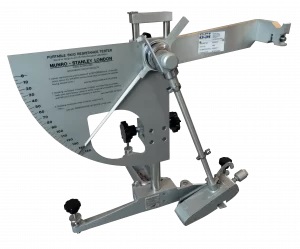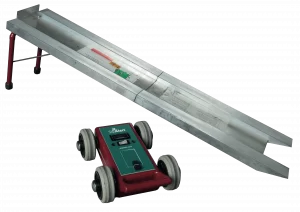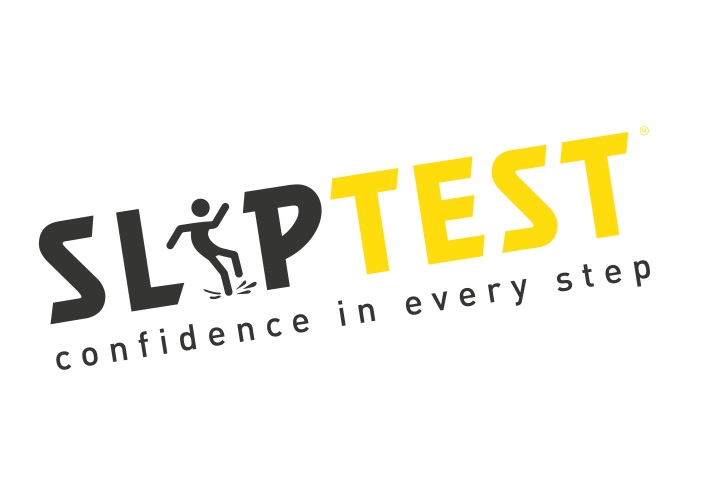Pendulum Tester or SlipAlert Tester?
SlipTest use both The Pendulum Tester and SlipAlert Tester to determine the slip resistance of a floor surface.
Our approach is to select the best test method for the location, surface or environment.
Both methods replicate a heel slip and both offer a good indication of available friction, and are recognised by the HSE. However, there are instances where one piece of equipment may be more suitable to use over the other and we use our experience to help us determine these at each site.
For example, the Pendulum Tester is particularly good for testing small areas such as bathtubs, shower trays or sample tiles. This is because the contact area the Pendulum Tester measures is only 5 inches and typically the surface area available in the above-mentioned locations is very small. With the surface space being small it does not allow enough room for the SlipAlert to travel the distance needed to measure the slip resistance of that surface and therefore you would select the Pendulum.
To test in a bathtub or shower tray you would select the Pendulum Tester but would need a ‘Bath or Shower adapter’ in addition. This transforms the Pendulum into a slim-line instrument that can fit into tighter spaces whilst still ensuring the stability of the tester and in turn accuracy of the results.
When you are selecting a new floor surface, the sample you are given is generally very small, and so you do not have the same run to measure if the flooring had been in-situ. Again, you would select the Pendulum Tester in this instance.
In contrast, we would typically use the SlipAlert Tester over the Pendulum Tester on slopes, this is because it is not as easy to stabilise the pendulum Tester on a slope and we find that the SlipAlert, therefore, is more accurate.
The Pendulum Tester is widely accepted as not being accurate at measuring slip resistance on slopes. For slopes the SlipAlert is the preferred testing method. The Technician uses pre-calculated adjustments and is able to alter the SlipAlert car’s acceleration down the ramp, to ensure that it maintains the correct speed when contacting the floor surface, and that it contacts with the correct force. The SlipAlert Tester is a great visual tool to demonstrate the extra slip resistance required on sloped surfaces, particularly when testing down the slope.
For every 1 degree of ramp slope, an additional 1.75 PTV is required for each of the risk categories.
E.g. For a 4 degree slope, 43 PTV would be required to be classified as a low risk of slip (36 PTV + (4×1.75PTV)).
We would also tend to favour the SlipAlert Tester on longer runs, as it replicates the mechanics of a slip better. In an average heel slip, when the foot contacts the floor surface, its speed is 0. If there is insufficient friction available, the heel will accelerate up to a speed of 8 or 9 feet per second, and after a distance of between 2 and 3 feet, the likelihood is that the pedestrian falls.
Both the Pendulum and SlipAlert contact the floor surface at a speed of approximately 8 or 9 feet per second.
When the pendulum breaks contact with the floor after completing its 5-inch run, it is still moving at roughly 6 feet per second. This means that is measures only a short amount of the momentum experienced by a pedestrian heel slipping across the surface.
The SlipAlert continues to run, until it reaches a speed of 0. This means that is tests the full range on momentum experienced by a slipping pedestrian heel.
To use the Pendulum Tester or SlipAlert Tester reliably, it needs to be operated and interpreted by a suitably trained and competent person.
Pendulum Tester, also known as the Pendulum Skid Resistance Tester

SlipAlert Tester




